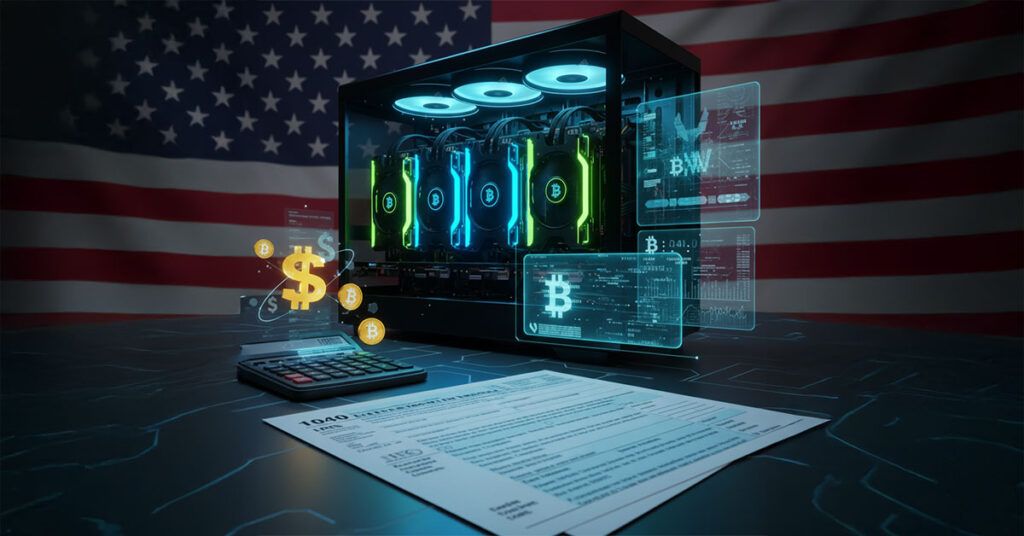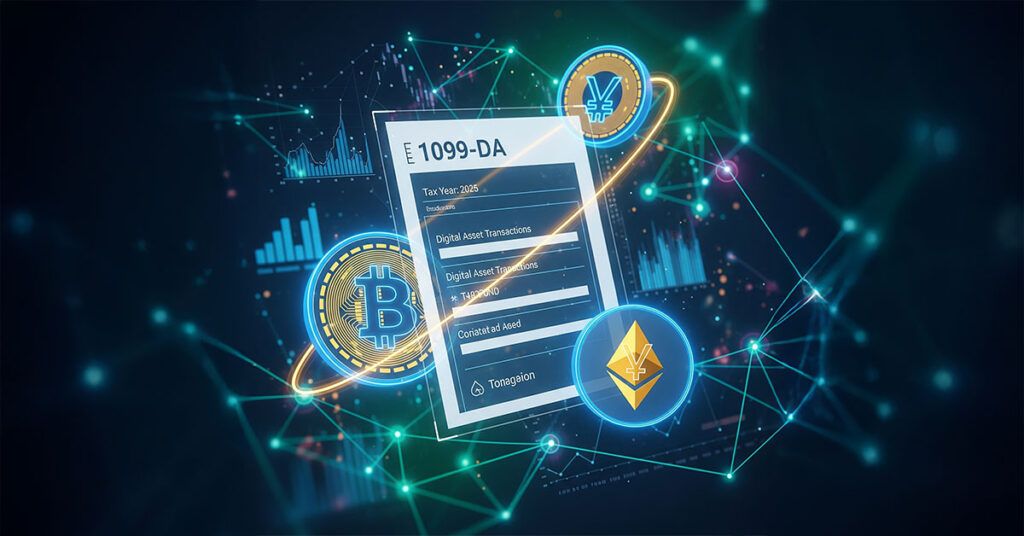Act One: A Letter in the Mailbox, a Shadow on the Blockchain
Picture this: a plain envelope lands in your mailbox. Inside is a notice stamped with a number that chills the spine—6173. It isn’t a scam email or some phishing text. It’s the IRS reaching across the blockchain into your living room, and they’re not curious—they’re certain.
In 2025, digital assets no longer drift in a legal gray zone. They’re treated as taxable wealth, as visible and scrutinized as wages or dividends. If you’ve swapped ETH for USDC, farmed yield on DeFi, or bought an NFT collectible, you’re part of the record the IRS is watching.
This isn’t about fear. It’s about survival. It’s about resilience. And, with the right preparation, it’s about staying one step ahead.
Why You’re in the IRS Crosshairs
The IRS’s crypto surveillance has evolved from blunt subpoenas into a finely tuned dragnet. Since 2016, the agency has compelled exchanges to share user data. What started as a trickle has now become a torrent of intelligence, strengthened by artificial intelligence and blockchain analytics.
Today, the IRS cross-checks your crypto activity against:
- Form 1040’s digital asset checkbox
- Form 8949 & Schedule D for gains and losses
- Forms 1099-K, 1099-B, and the new 1099-DA
The Big Change: Form 1099-DA
As of January 1, 2025, Form 1099-DA is mandatory for all brokers handling crypto transactions. Whether the IRS data is precise or flawed, you’re legally responsible for reconciling it with your own records.
This is where proactive recordkeeping becomes your shield. Without airtight records, you risk paying taxes on income you never earned—or worse, being flagged for underreporting.
Artificial Intelligence Joins the Audit
Forget about human auditors shuffling papers. The IRS now deploys AI to:
- Detect underreported income
- Cluster wallets to reveal linked identities
- Trace DeFi mixer activity
- Flag discrepancies in cost basis reporting
Even diligent taxpayers can be flagged. That’s why documentation isn’t optional—it’s your first and best defense.
Tracking Cost Basis—Wallet by Wallet
The IRS now requires you to track cost basis per wallet, not just across your portfolio. Only FIFO (First In, First Out) and Specific Identification are approved. Methods like LIFO or “average cost” won’t hold up under audit.
Pro tip: Instead of juggling spreadsheets or patching together partial solutions, CRPTM’s wallet-level reconciliation automates the process and consolidates records across exchanges, DeFi, and NFTs. It ensures your numbers align with IRS expectations and gives you confidence under scrutiny.
DeFi, NFTs, and the Black Hole of 1099s
DeFi protocols and NFT marketplaces rarely issue 1099s. That doesn’t absolve you. It means you’re solely responsible for recordkeeping.
Best practices:
- Log timestamps, wallet addresses, and contract IDs
- Screenshot major trades or yields earned
- Archive metadata for NFT transactions
CRPTM streamlines this chaos by letting you log, categorize, and securely back up your DeFi and NFT activity in one system—so you’re not fumbling through old screenshots when the IRS calls.
Decoding the IRS Crypto Letters
These notices aren’t random—they’re calibrated signals. Here’s what they mean:
- Letter 6174 – “Heads-Up”
IRS knows you’re in crypto. Double-check your filings. - Letter 6174-A – “Soft Knock”
IRS has data (like a 1099-K) suggesting underreporting. - Letter 6173 – “Respond or Else”
Serious. You must respond—or prepare for audit. - CP2000 – “Proposed Adjustment”
IRS assumes you underreported. Burden shifts to you to prove otherwise.
In every case, your defense is the same: accurate, organized, and accessible records. That’s what turns a stressful letter into a manageable task.
Audit Triggers & Lookback Periods
You’re at greater audit risk if:
- You report $0 income despite a 1099 filing
- You trade on offshore or privacy-first exchanges
- You underreport DeFi or NFT income
Audit windows:
- 3 years (standard)
- 6 years+ (for substantial underreporting or fraud)
Global Angle: FATCA & FBAR
If your crypto lives offshore, you may need to file:
- FBAR (for holdings > $10K)
- Form 8938 (FATCA disclosure)
Noncompliance can escalate from penalties to criminal charges.
The IRS-Proof Checklist for 2025
- Sync all exchanges and wallets monthly
- Archive records in both cloud and offline formats
- Stick to FIFO or Specific ID
- Use automated software with AI error checks
- Respond to IRS letters promptly
- Manually log NFT, DeFi, and offshore activity
- Consult a tax professional annually
CRPTM integrates all these steps into one seamless dashboard—records, reconciliation, and readiness in a single platform designed for crypto investors navigating regulatory scrutiny.

Act Two: From Disclosure to Dominance
The game has changed. The days of crypto as a tax-free frontier are gone. Today, it’s a regulated airspace where AI drones patrol every transaction. Survival isn’t enough—you need to design your strategy for resilience and foresight.
1. Crypto Tax Optimization in 2025
- HODLing vs. Flipping: Long-term gains are taxed lower.
- Wash Sale Loophole: Crypto still escapes wash sale rules, but legislation could close that gap soon.
2. Advanced Tools to Shield and Structure
- Tax Loss Harvesting: Offset gains with strategic sales.
- Entity Structuring: Consider LLCs or S-Corps for high-frequency activity.
- Self-Directed IRAs: Explore crypto within retirement structures.
3. Estate Planning in a Digital Era
Crypto fortunes vanish when keys are lost. Plan with:
- Multi-sig wallets
- Smart contract wills
- Charitable trusts and structured gifting
4. Future-Proofing for 2026+
- Global tax treaties loom
- Smart contracts may include embedded tax logic
- A U.S. digital dollar could automate tax withholding
Final Word: Audit-Resistant, Future-Ready
The IRS doesn’t need subpoenas anymore. The blockchain is public. The data is structured. The AI is relentless.
But this isn’t about panic. It’s about preparation. It’s about building a system that makes compliance second nature, not a scramble.
With CRPTM, your defense strategy is more than paperwork—it’s resilience, clarity, and control.
Because in the end, the path is clear:
From Letters → To Ledgers → To Legacy.
From Chaos to Clarity: The Compliance Workflow Showdown
Even the most diligent investor struggles to keep tax records perfectly aligned without the right tools. To illustrate the difference, here’s a side-by-side comparison of the compliance journey—DIY vs. CRPTM.
| Step | Goal | Without CRPTM | Score | With CRPTM | Score |
| Data Collection | Accuracy & coverage of records | Manually pulling CSVs from multiple platforms, high risk of gaps or errors. | 4/10 | Automated syncing of all wallets, exchanges, and DeFi/NFT platforms in one dashboard. | 10/10 |
| Cost Basis Tracking | IRS compliance & methodology | DIY spreadsheets often mix FIFO/LIFO or unsupported methods. | 3/10 | Automated FIFO & Specific ID per wallet—fully IRS-compliant. | 10/10 |
| DeFi & NFT Activity | Completeness of reporting | Screenshots & manual logs—easy to lose or omit. | 5/10 | Seamless integration: NFT trades, smart contracts, yields recorded & archived. | 9/10 |
| IRS Letter Response | Speed & preparedness | Scrambling to assemble logs, risking missed deadlines. | 4/10 | One-click reconciled reports & logs, ready to submit. | 10/10 |
| Audit Readiness | Organization & resilience | Disorganized files scattered across cloud/hard drives. | 3/10 | Centralized encrypted archive with quarterly auto-backups. | 10/10 |
| Time Spent Annually | Efficiency | 30–50+ hours manually reconciling & filing. | 4/10 | <10 hours—automation handles the heavy lifting. | 9/10 |
| Peace of Mind | Confidence & stress level | Constant worry about mistakes or penalties. | 3/10 | Built-in compliance gives confidence & control. | 10/10 |
The Scoreboard: Proof in Numbers
- Total Score Without CRPTM: 26 / 70
- Total Score With CRPTM: 68 / 70
Numbers tell the story best: CRPTM doesn’t just make compliance easier—it transforms it from a burden into a competitive edge.
Disclaimer: The information presented on this website is intended for general informational purposes only and should not be interpreted as professional advice from CRPTM. CRPTM does not offer financial advice. We strongly recommend seeking independent legal, financial, tax, or other professional advice to determine how the information provided on this website applies to your specific circumstances. CRPTM assumes no liability for any loss incurred, whether due to negligence or otherwise, resulting from the use of or reliance on the information contained herein.


